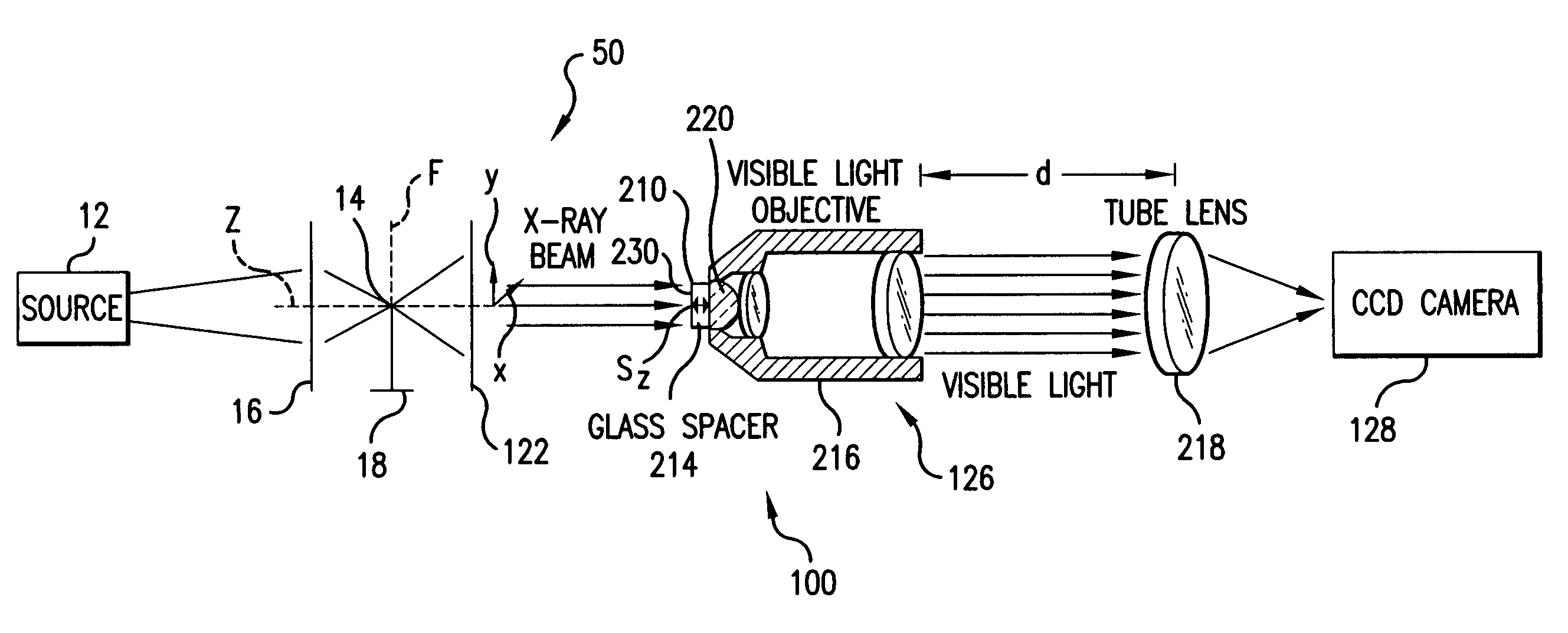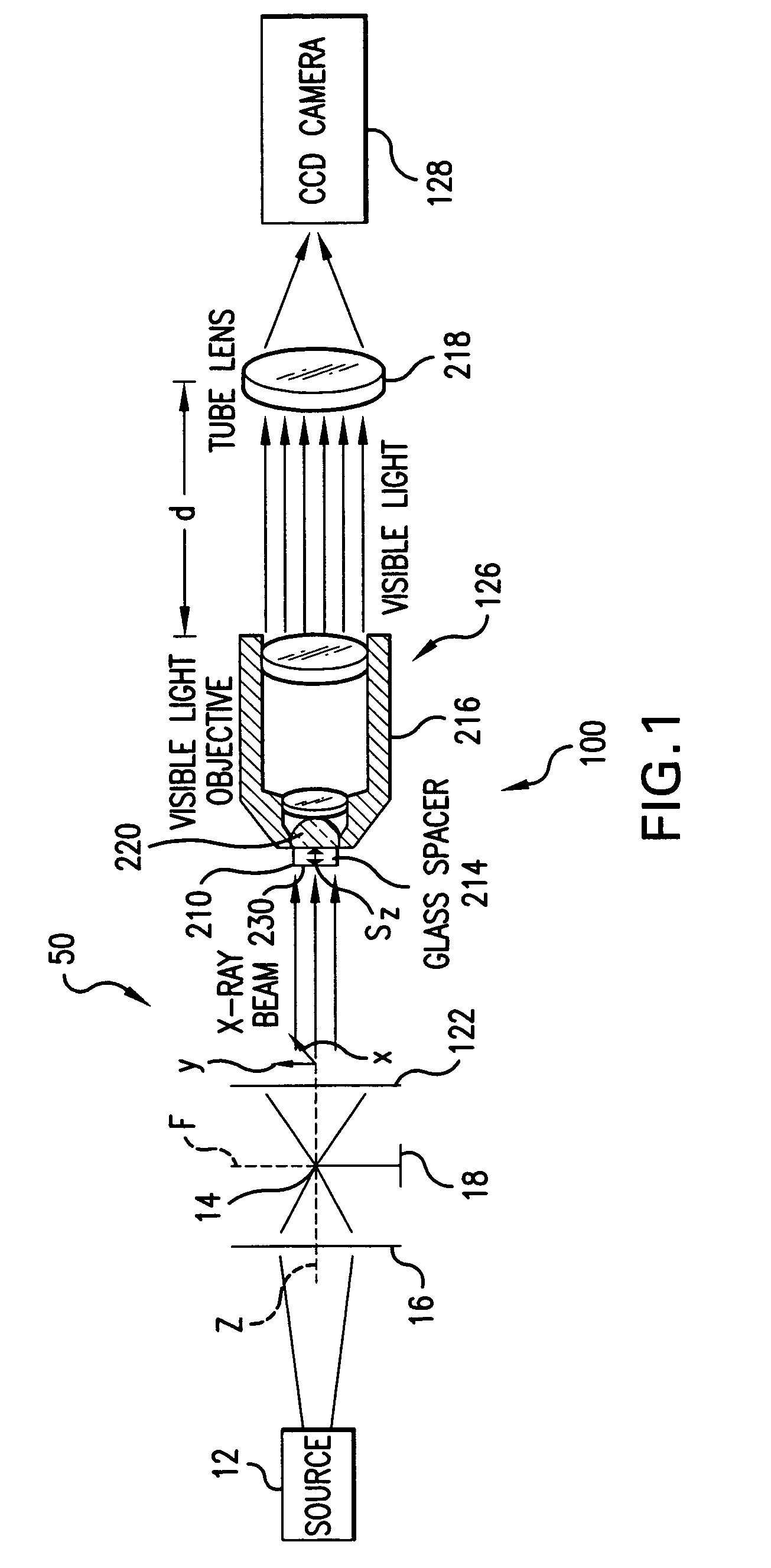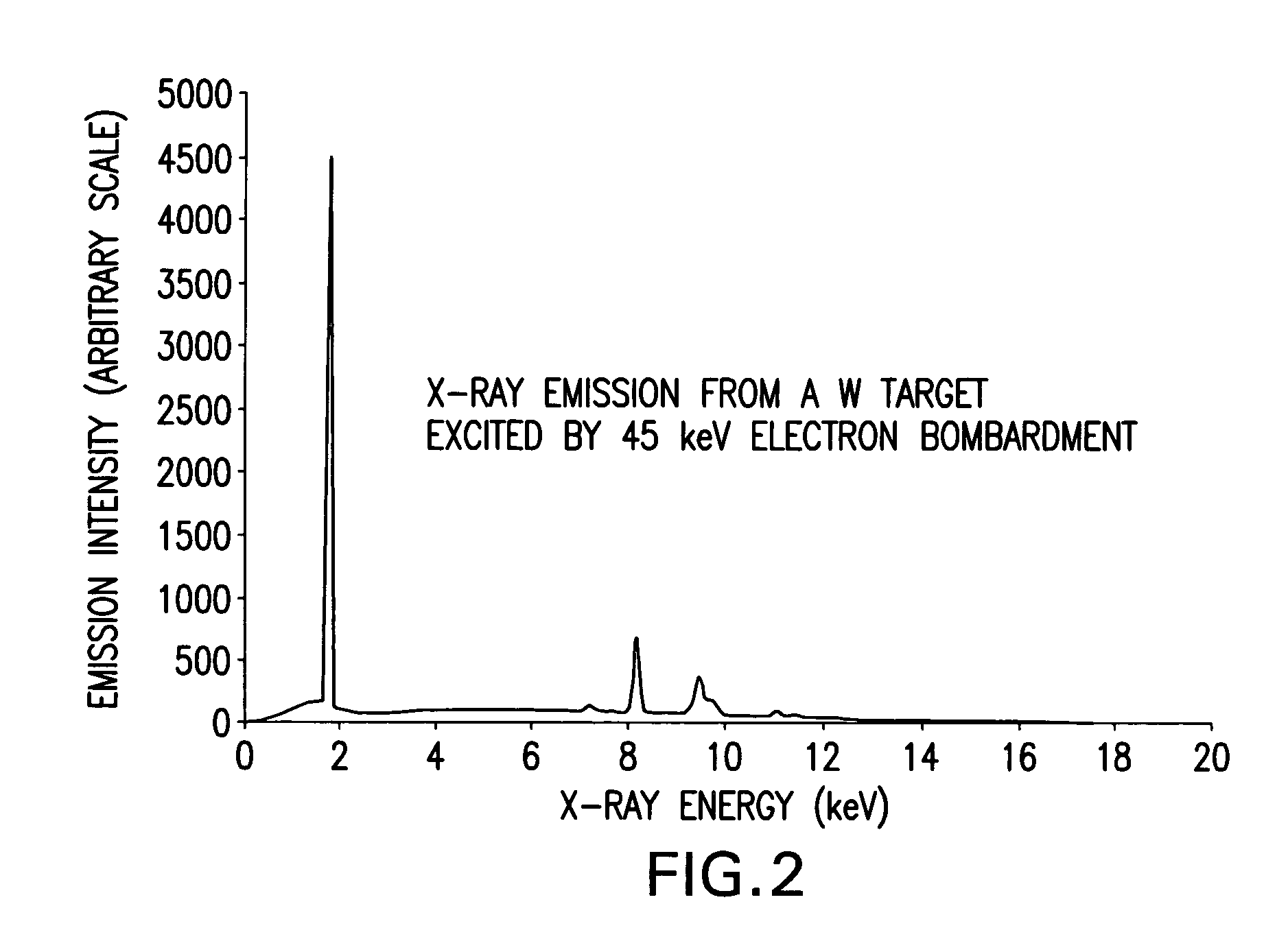Scintillator optical system and method of manufacture
- Summary
- Abstract
- Description
- Claims
- Application Information
AI Technical Summary
Benefits of technology
Problems solved by technology
Method used
Image
Examples
Embodiment Construction
[0038]FIG. 1 shows an X-ray microscope, including a scintillator optical system 100, which have been constructed according to the principles of the present invention.
[0039]Specifically, a sample 14 is located at the system's focal plane f. It is illuminated preferably by hard x rays in 1–20 kilo-electron-Volts (keV) photon energy range. These x-rays are generated by a source 12 and possibly concentrated by a concentrator or capillary tube condenser 16.
[0040]In the preferred embodiment, the sample 14 is held on a stage that allows for positioning along the optical axis z, and also positioning in the x-axis direction and the y-axis direction, which are orthogonal to the z optical axis. The diverging x-rays from the sample 14 are collected by an X-ray optic. Preferably, a zone plate lens 122 is used. This focuses the radiation onto scintillator material 210.
[0041]The scintillator material 210 converts x-ray radiation into visible-light photons by either phosphorescence (forbidden decay...
PUM
 Login to View More
Login to View More Abstract
Description
Claims
Application Information
 Login to View More
Login to View More - R&D
- Intellectual Property
- Life Sciences
- Materials
- Tech Scout
- Unparalleled Data Quality
- Higher Quality Content
- 60% Fewer Hallucinations
Browse by: Latest US Patents, China's latest patents, Technical Efficacy Thesaurus, Application Domain, Technology Topic, Popular Technical Reports.
© 2025 PatSnap. All rights reserved.Legal|Privacy policy|Modern Slavery Act Transparency Statement|Sitemap|About US| Contact US: help@patsnap.com



